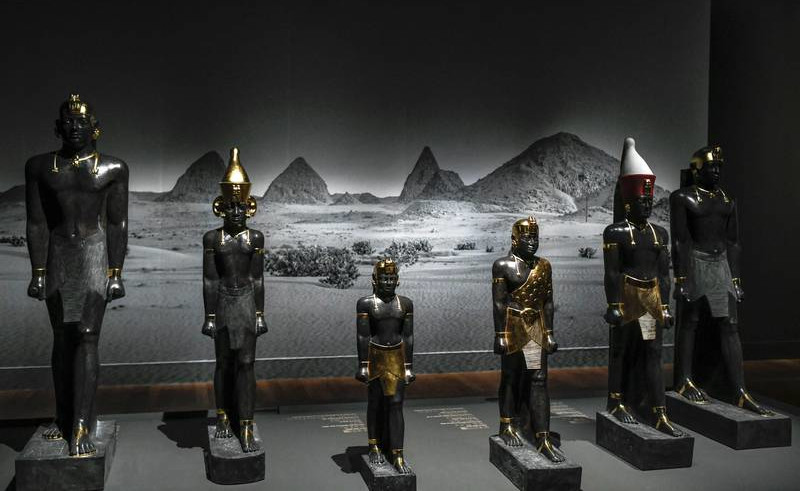Shards of shattered pottery and fragments of ancient statues lie scattered among broken glass and spent bullet casings inside Sudan’s National Museum, not far from the confluence of the Blue and White Niles in the capital, Khartoum.
More than two years after the outbreak of a civil war that has killed tens of thousands and displaced millions, the Sudanese army expelled the paramilitary Rapid Support Forces (RSF) from Khartoum and its surroundings in the spring.
But much of the city remains in ruins, including a number of its heritage sites. Antiquities were damaged during the fighting, while looters made off with more and smuggled them into neighboring countries.
Damage and Looting
Archaeological preservation experts, who returned to the city after the army’s advance, are now combing through the rubble in an attempt to recover and restore what they can.
“The museum was severely and extensively damaged. A large number of artifacts were stolen, and they are extremely important to us,” said Rahab Khidr al-Rashid, head of a committee formed to assess the damage and secure museums and archaeological sites in Khartoum State, as she stood in a debris-filled hall. “Every piece in the museum tells a story. All the artifacts are important, but those stolen were of particular significance to us as archaeologists.”
Ikhlas Abdel Latif, Director of the Museum Department at Sudan’s National Corporation for Antiquities and Museums, said that around 4,000 artifacts have so far been recorded as missing in Sudan. These include items from Khartoum as well as from other parts of the country, such as the Darfur region in western Sudan, where about 700 artifacts vanished from museums in the cities of Nyala and El Geneina. In El Geneina, the museum curator was killed when the building was shelled.
Some of the stolen items appear to have been smuggled into neighboring countries. Sudan now joins a long list of states—including Iraq, Syria, Libya, and Egypt—where looting of antiquities has surged in the aftermath of political upheaval.
Temples and Antiquities
The courtyard of the National Museum houses several temples and other antiquities that were relocated to Khartoum from northern Sudan in the 1960s to protect them from flooding caused by the construction of Egypt’s Aswan High Dam.
Among the most striking is the Temple of Buhen, built by Egyptian Queen Hatshepsut, who ruled around 1500 BCE. The temple sustained damage during the fighting, and authorities are working to repair it—though with “very limited resources,” according to Rahab.
“The temples were greatly affected by the war, with damage visible to the building roofs and the glass structures surrounding the temple,” she said. “As a team within the National Corporation for Antiquities and Museums, we are carrying out some repairs with extremely limited means, but we appeal to specialized bodies and the ministry to extend a helping hand so these temples can be properly restored.”
High Costs
The National Museum was not the only heritage site to suffer damage. The Presidential Palace Museum in Khartoum is now filled with charred rubble, while antique cars parked outside lie amid the wreckage, their windows and headlights smashed.
Ikhlas estimated that restoring and safeguarding Sudan’s museums and remaining antiquities could cost up to $100 million—a sum preservation experts are unlikely to secure anytime soon, given the country’s dire economic situation.
There is also the question of when foreign experts will feel safe enough to return. Before the war, Sudan hosted around 45 archaeological missions, but all have since ceased operations.
“We had about 45 archaeological missions working in the field in Sudan before the war,” Rahab said. “Afterward, not a single mission remained. All suspended their work because of the conflict, and we hope they will one day return to resume their activities.”
